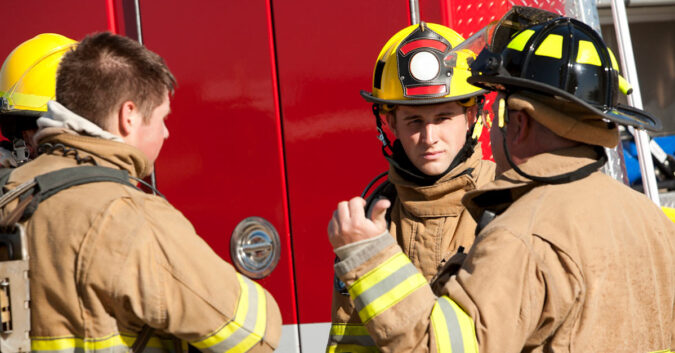Volunteer firefighters make up about 67% of the firefighting force across the country. However, they’re often left out of discussions about the occupational risks firefighters face every day — including the devastating health impacts of exposure to toxic substances like forever chemicals known as PFAS.
“Firefighters have heightened exposure to PFAS through their protective gear and fire suppression foam.”
– Judith Graber, Professor at Rutgers School of Public Health
A recent Rutgers study focused on 135 volunteer firefighters in New Jersey and found that 80% had high levels of two forever chemicals — perfluorododecanoic acid (PFDoA) and perfluorodecanoic acid (PFDA) — compared to the general population.
Exposure to PFAS chemicals can increase the risk of several cancers, including bladder cancer, kidney cancer, and pancreatic cancer.
To help pay for medical expenses and provide their family with financial security, many firefighters have decided to take legal action through a PFAS lawsuit.
If you or someone you love worked as a firefighter and developed cancer linked to PFAS exposure, Sokolove Law is here to help.
How Are Volunteer Firefighters Exposed to PFAS?
Volunteer firefighters are exposed to PFAS the same way as career or military firefighters — through the equipment and gear meant to keep them safe.
PFAS are used in firefighting foam and protective turnout gear because the chemicals are resistant to heat, moisture, and oil, allowing firefighters to work in highly hazardous conditions.
However, when these chemicals come into contact with the skin, they can enter the body and remain there for decades.
Higher levels of PFAS were found in volunteer firefighters who had served for many years, some 20 years or more. The study found that volunteer firefighters are always on call, causing them to “accumulate more years of firefighting-related exposures than their career counterparts.”
Many argue that these chemicals play into the rising cancer rates among both volunteer and career firefighters. In fact, cancer now accounts for two-thirds of firefighter deaths.
Phasing Out PFAS Gear to Protect Firefighters
Over the last few years, efforts have been made to phase out PFAS usage in firefighting foam and replace it with PFAS-free alternatives.
However, there are currently no PFAS-free options for turnout gear, something the International Association of Fire Fighters (IAFF) has recently launched efforts to change.
In a way, turnout gear has to be treated with PFAS due to standards set by the National Fire Protection Association (NFPA). The NFPA requires any moisture barrier materials — like the three layers of turnout gear — to pass a 40-hour ultraviolet light degradation test that PFAS chemicals alone can pass.
“PFAS-based materials are the only viable options for some key equipment that meet the vital performance properties required for firefighting gear,” stated the American Chemical Council.
This has led the largest organization of first responders to file litigation urging the NFPA to remove the dangerous requirements that needlessly expose the fire crews to PFAS.
“We had no idea that the gear that we were putting on every day was essentially loaded with PFAS,” explained IAFF General President Edward Kelly. “As more scientific data availed itself, it became obvious that our greatest exposure to carcinogens is our daily donning and doffing of PPE bunker gear."
However, even if regulations changed and PFAS-free gear became the standard, it may take longer for volunteer crews to get PFAS-free gear because volunteers may not have access to the same amount of funding as their career counterparts.
Without funding, it may take years for this gear to reach firefighters at the volunteer level, exposing them to even greater levels of PFAS as time goes by.
Fighting for Career and Volunteer Firefighters Exposed to PFAS
Exposure to PFAS and other carcinogens like asbestos put firefighters at risk of developing serious occupational cancers — and volunteer firefighters may be just as much at risk.
If you or your loved one was exposed to PFAS as a firefighter and later diagnosed with cancer, you may be eligible for firefighting foam settlements from a PFAS lawsuit.
For over 45 years, Sokolove Law has helped victims and families pursue justice for preventable illnesses. Our lawyers have recovered over $10 Billion total for clients nationwide, including for families affected by PFAS.
See how we can help you with a free case review. Call (800) 995-1212 now to speak with a member of our team.
